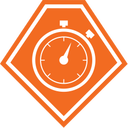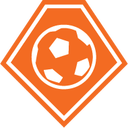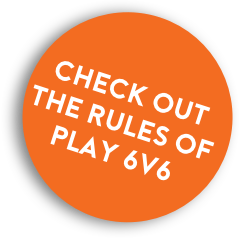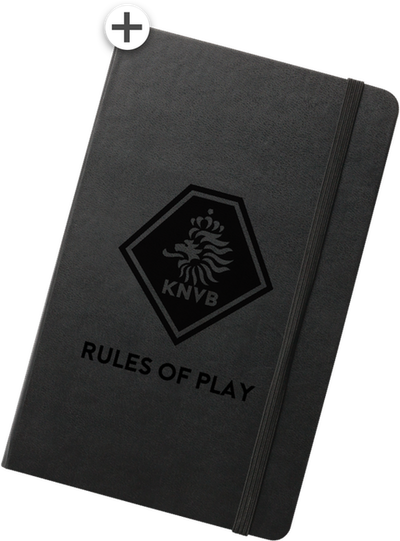The 6 versus 6 game format
Under 8s and 9s
As of the 2017/2018 season
Under 10s
As of the 2018/2019 season
The 6 versus 6 game format will be played by children in the under 8, under 9 and under 10 age-groups. This format enables children to enjoy more touches of the ball, they can pass and dribble a lot, they can play in more positions and they are more involved in the game. The KNVB is to kick off the 2017/2018 season by offering this game format for these youthful footballers. The KNVB will organise these competitions, for which clubs can register freely. Throughout the Netherlands, a so-called year-of-birth competition and corresponding football package will be on offer to all youthful footballers.
In the interests of enjoyment and child development, the KNVB will no longer maintain rankings and leader boards for the U9s as of the 2017/2018 season. As of the 2018/2019 season, this will also be the case for the under 10s. The KNVB will keep track of the results in order to structure the competition properly.
Research shows that children aged under 10 are not yet capable of projecting weeks ahead. They are primarily interested in the here and now - and match day itself. For these children, the weekly game is the football celebration of the week. Next week it's party time again, so for this reason it is not necessary to connect the celebrations by keeping track of the results. Naturally enough, they want to win every game. But if that doesn't happen, then they are still happy after the game about that wonderful run or that fantastic goal or the penalty that found the net.
Download
![]() Rules of play - Dutch (PDF)
Rules of play - Dutch (PDF)
6 versus 6 game format and rules of play

Playing time
The playing time for the under 8s and under 9s is 2 x 20 minutes. And 2 x 25 minutes for the under 10s.
Time-out
Each half, a time-out of no longer than two minutes is observed after the U8s/U9s have played for 10 minutes and after the U10s have played for 12.5 minutes. This gives the supervisor the opportunity to briefly review the game, offer tips and focus on areas of attention, and allow the children to enjoy refreshments.
Half-time
After the first half, a 10-minute maximum period for half-time is observed.

Kick-off
The kick-off is taken from the middle line. Both teams start the game from their own half.
Goalie's ball
When the goalkeeper catches a ball that did not leave the field of play, the goalie can resume play by throwing or passing the ball or kicking out of hand.
Goal kick
The goal kick is taken when the ball is on the ground by passing or kicking it to a teammate.
Corner
Corners are taken from the corners of the pitch and dribbled into play or passed to a teammate.
Goal
After a goal, the kick-off is taken from the middle line. Both teams restart from their own half.
Out of play
If the ball crosses the sideline, it is dribbled back into play.
Free kick
A free kick may be dribbled, passed or shot at goal.
Back-pass
A ball passed back to the goalkeeper may not be picked up.
Infringement / scoring opportunity
After a violation, the opposition is awarded a free kick. If the infringement deprives the opposition of a serious scoring opportunity, a penalty is awarded.
Distance
The opponent must be at least five metres away from the ball at every restart.

Referee / match supervisor
For this game format, a match supervisor in kit of at least 12 years old is required. The match supervisor does not stand on the pitch, but on the sideline. Should the rules of play be incorrectly observed, the match supervisor takes a decision and explains the rules of play.

Competition
A competition (pool classification and fixtures schedule) is organised for this game format.
League tables
The KNVB will not announce rankings or leader boards. The KNVB will keep track of the results of each game in order to determine the strength of each team and - based on that - to reclassify a team if necessary.

Rituals
Stimulate shaking of hands before the game and a high-five afterwards as a way of saying thanks for the game. After the game, both teams can take penalties from a seven-metre distance. Youthful footballers always regard the taking of a penalty as a wonderful way to end the game. This is not only the case for the winning team, but also for the players on the losing side.

Ball size
The KNVB recommends a size-four ball of 290 grams. A size-five ball of 290 grams is also permitted.


